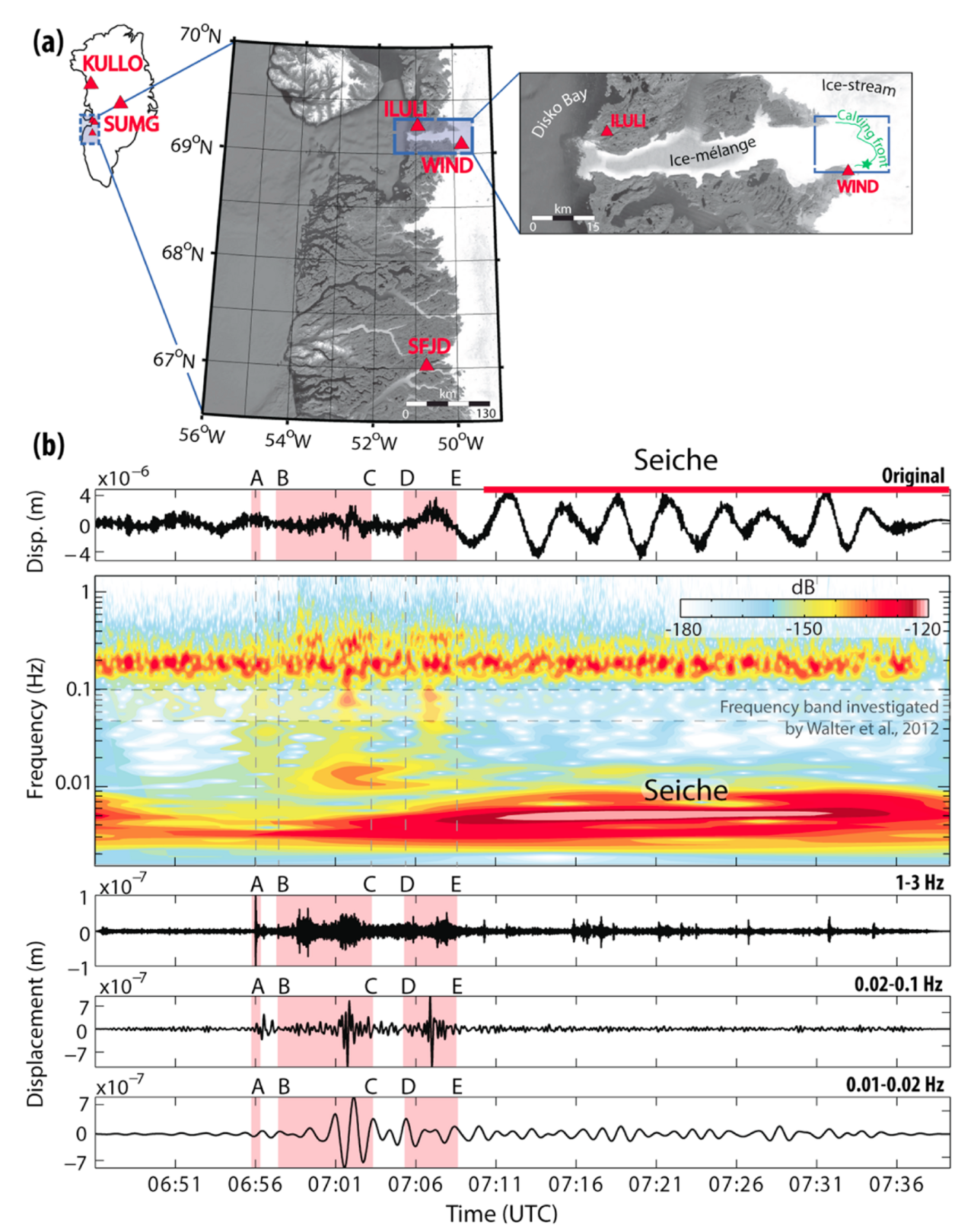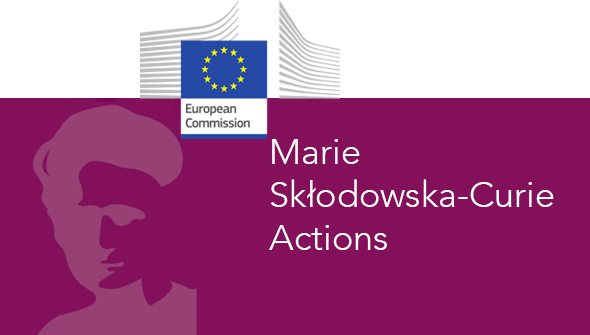ESR06: Quantification of ice mass loss due to iceberg calving in Greenland by coupling seismology, modelling and machine learning
PhD description and objectives : The Greenland ice sheet mass loss due to melting and iceberg-calving and its contribution to sea-level rise has more than quadrupled from 1991-2001 to 2002-2011, in response to climate change. Quantification of the spatio-temporal distribution of iceberg calving is thus a key issue, in particular as it represents a significant unknown in Global Climate Models. As they calve, icebergs apply a force on marine-terminating glacier termini, thereby generating seismic waves that can be used to recover information on the calving processes.
The aim of this project is to quantify ice-mass loss related to iceberg calving by combining inversion of these seismic data with simulation of the mechanical process involved. Based on this coupling strategy, we have been able to estimate for the first time the spatio-temporal variations of iceberg volumes in Greenland over the past twenty years. However, large uncertainties remain on the inverted iceberg volume due to the poor description of the drag force applied by the water during iceberg rotation in the models. Furthermore, interaction of iceberg calving and glacier flow dynamics has not yet been investigated in this approach.
To better recover iceberg volumes from seismic data, our objective is to develop two directions in parallel. The first one, which is the central point of this PhD thesis, will focus on seismic inversion and signal analysis in the different frequency bands to recover the force generated by the calving and its relation to the high frequency characteristics. This will be used together with Machine Learning techniques to characterize and detect smaller events than those present in existing catalogues. In parallel and in collaboration with another PhD student, we will improve mechanical modelling of iceberg calving and add the glacier terminus description in the model that previously only considered iceberg rotation along a vertical wall. Different basal friction laws between the glacier and the bedrock will be implemented to investigate the potential glacier acceleration following iceberg calving as observed in Greenland. The waveform dependency on each source process (iceberg geometry, friction, buoyancy…) will be identified by the simulations and further used to feed the Machine Learning techniques to build efficient detection, classification and characterization methods.
Expected results: With this project, we will be able to quantify the spatio-temporal change of ice-mass loss in Greenland related to iceberg calving during the last thirty years using seismic data. A catalogue of events covering the last 30 years will be constructed from new methods of detection and classification of seismic signals generated by iceberg calving in Greenland. All these efforts will contribute to better constrain iceberg calving in large scale Greenland models included in Global Climate Models.
Host institution: Institut de Physique du Globe de Paris (IPGP), France
Supervisors: Anne Mangeney (IPGP), Eléonore Stutzmann (IPGP)
Co-supervisor: Stuart Lane (UNIL, Switzerland)
Collaborations: Clément Hibert (ITES) and other members of theEuropean Network EnvSeis involving about 20 PhD students, regular European schools and workshops in Environmental Seismology. This work will also be done in collaboration with experts in glaciology from Switzerland and Japan.
PhD candidate skills and requirement: Master in physics or geophysics or equivalent. Skills in signal processing and seismology, in programming (python and fortran or C), in massive data analysis are required. Candidates must not have resided or carried out their main activity (work, studies, etc.) in France for more than 12 months in the 36 months immediately before the recruitment date. Applications should be sent to anne.mangeney@gmail.com, stutz@ipgp.fr and hibert@unistra.fr.


